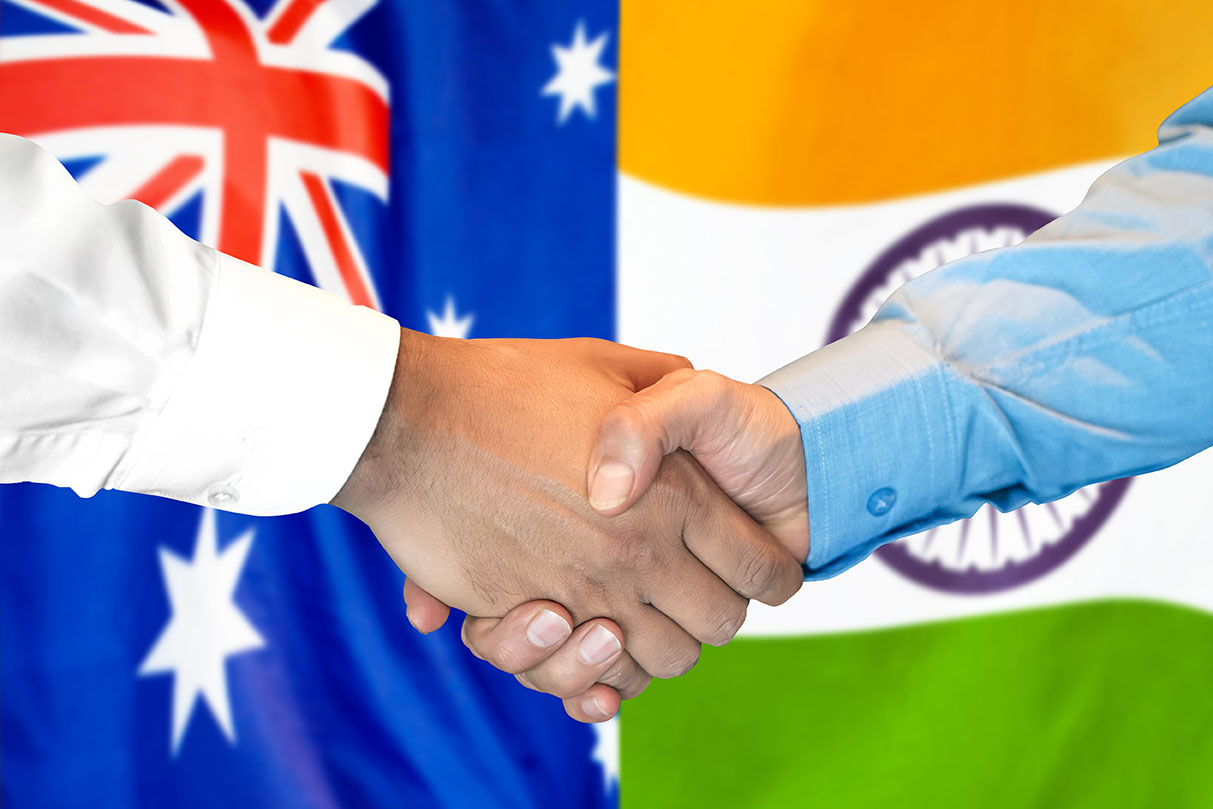The two largest democracies in the Asia Pacific region are finally ready to shake hands.
Open trade between Australia and India has increased incrementally over the last decade. Their relationship seems to be making leaps and bounds with an interim Economic Cooperation and Trade Agreement signed on 2 April. Prime Ministers Morrison and Modi seem ready to commit to the long-term Comprehensive Economic Cooperation Agreement (CECA) by the end of 2022.
Is CECA Solely an Economic Partnership?
In short, no it is not. The partnership is also deeply motivated by both countries’ desire to negate their reliance on China. Australia has had diplomatic disputes with China for years, despite the Asian nation being their largest trading partner. Economic sanctions on coal, beef, wine, seafood and barley have been placed over Australia due to recent disagreements, further encouraging Aussie trade elsewhere.
India is desperate to diversify its supply chain management as reliance on China has become worrying after suffering recurring aggressive acts such as the Galwan Valley clash in 2020. The Indian economy offers the world more reliable manufacturing and an explosive tech market. Many countries may follow Australia’s desire to move away from Chinese exporters.
How Will It Work?
Tariffs will be lowered or completely removed on a wide selection of goods between the two nations in order to encourage two-way trade. Other constraints such as technical barriers to trade and certain immigration constraints will be renegotiated as well.
The agreement will simply boost what is already unfolding. Data from the Ministry of Commerce and Industry in India shows a 104.8% year-to-year increase in Indian exports to Australia, with Australian imports to India increasing by 99.5% a year. This momentum has created the perfect opportunity for such an agreement to slip into place seamlessly.
What is the End Goal?
Governments in both countries expect trade in goods to reach USD $50 billion within 5 years of the documents signing. Australia wishes to make India one of their top three export markets by 2035 and its 3rd biggest investment destination in Asia.
India is not a part of any significant trade block. FTAs are their greatest hope of boosting an export market and securing imports to bolster their shaky supply chain. Securing well-placed inputs is a crucial factor in the future of Indian economic growth — especially that of coal which can now be sourced more affordably from Australia.
Bi-lateral cooperation is the future of political prosperity. FTAs are becoming commonplace between nations. Securing a key spot in the global supply chain is the only way to ensure economic stability.
Private operators seem equally excited by the progressive partnership. Investors across the world watch with tenterhooks — ready to take advantage of the opportunities this deal will create.
For more information on the CECA trade deal click here.


